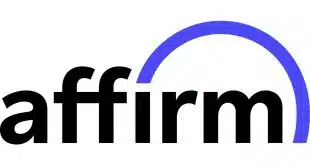With the POS conversion in progress, the next step is to accommodate EMV chip cards in ATMs. That will require planning, money, and expertise.
With the EMV liability shift for the point of sale well under way, the next big step in the transformation of the U.S. payment industry from magnetic-stripe technology to EMV chips is less than a year away. Up next is the Oct. 1, 2016, liability shift for ATM transactions made with MasterCard Inc. branded credit and debit cards. Visa Inc.’s deadline is Oct. 1, 2017.
As with the POS conversion, there are questions and concerns about costs, consumer and merchant education, and network routing requirements stemming from the Dodd Frank Act’s Durbin Amendment. The 20-year-old international EMV standard was designed for a single network each for credit and debit transactions, but the amendment stipulates that U.S. merchants have a choice of debit networks.
With more than 400,000 ATMs in the United States, the amount of work involved in converting to EMV, including hardware and software upgrades, is staggering. As countertop POS-terminal manufacturers began shipping EMV-compatible devices long before the 2015 liability shift for POS transactions, so too ATM makers have been installing EMV hardware, with the expectation that the EMV capability will be activated when both the appropriate software and the ATM operators are ready.
For example, NCR Corp., a Duluth, Ga.-based ATM manufacturer and point-of-sale provider, says all of its SelfServ-branded ATMs have come equipped with EMV readers since 2011.
As for the differing liability-shift dates, that’s not the issue it may appear because the industry is treating MasterCard’s date next year as the de facto target, says Bruce Wayne Renard, executive director of the National ATM Council Inc., a Jacksonville, Fla.-based association for independent ATM operators.
“Exposure is significant enough for ATM providers based upon the MasterCard base alone to not want to wait for the Visa shift date to kick in,” he explains.
‘Basic Fairness’
Upgrade costs, however, may be significant. An older ATM, for example, may incur heavy costs to meet the EMV requirements. Research released earlier this year by the Sioux Falls, S.D.-based ATM Industry Association (ATMIA), a trade group of ATM independent sales organizations and retail ATM operators, found it could cost $2,000 to $3,000 per machine, depending on the required upgrades, says David Tente, ATMIA executive director for the United States and Latin America.
“In some cases, they have to add memory and a new motherboard,” Tente says, “but others may only need a dip reader.”
These readers may be available in the $200 to $300 range, says Renard, but some of the kits can cost two to three times that amount. The pricing for upgrade kits and software varies by manufacturer. “We have seen kits as low as $300, and up into the thousands on higher-end banking units,” says James Phillips, vice president of sales and marketing at Triton Systems, a Long Beach, Miss.-based ATM maker.
“In addition to the cost of the upgrade kit, there are operational costs associated with installing and configuring the EMV upgrade,” Renard tells Digital Transactions via email. These often entail multiple visits to the ATM to install or adjust the applicable programming or hardware, or both, “adding hundreds of dollars in time and transportation that drive these costs up significantly.”
Renard would like to see an incentive program backed by MasterCard and Visa to help ATM operators defray some of their costs. “This has been done in other countries and is appropriate for adoption in the U.S. as a matter of basic fairness and to facilitate a more orderly and timely shift to the new platform by America’s ATM industry,” he says. “ATM providers will see no savings and should not be made to bear all the costs themselves.”
Neither MasterCard nor Visa responded to inquiries from Digital Transactions about the EMV liability shift for ATMs.
‘It’s a Mess’
What may exacerbate upgrade costs is the very nature of ATMs. Designed to be standalone machines, ATMs are serviced by technicians. The impending workload may cause a crunch in the number of available technicians. “Resources are going to get more and more scarce as we get closer and closer,” Tente tells Digital Transactions. “For those who haven’t started or gotten far yet, there’s only ‘X’ number of qualified people.”
Even machines just needing an EMV reader and the applicable software installed are going to require a technician to touch the machines, Tente says. “There’s only so many you can do in a day,” he adds.
As Renard says, “Based on history, prices will rise as the liability shift date approaches and supplies are stretched.”
ATM operators set up as independent sales organizations might fare worse than their bank and credit union counterparts. “Most of the banks will have mostly upgraded by that point,” says ATM and payments-industry consultant Sam Ditzion, chief executive of Boston-based Tremont Capital Group. “We’ll need to see what happens with ATM deployers.”
The retail EMV shift may have other lessons for ATM operators. Software readiness and stock availability have played key roles in that effort, and may, too, for ATM operators, says Chole Casber, product manager at The Members Group, a Des Moines, Iowa-based credit union services organization.
“With the EMV migration for POS, retailers have run into issues with acquiring-software delays, as well as hardware manufacturers’ stock being unable to meet demand,” Casber warns. “Both have pushed out timelines and created a need for more testing. The ATM industry should be prepared for similar hiccups. You can almost guarantee software and hardware delays, and don’t expect to have everything working perfectly on the first try.”
ATMIA’s Tente foresees other issues involving testing upgraded ATMs. While it’s easy enough to perform a dummy transaction with a POS terminal—thanks to the absence of an actual good or service being exchanged—that’s not the case with ATMs, where testing requires ensuring the machines dispense the correct amount of cash.
“With ATMs the only way you can really test it is to take cash out of the ATM,” Tente says. The issue becomes which account the money is taken from and ensuring test cards are properly distributed to test technicians. “There’s only a limited number of cards the networks have available.”
But the retail EMV shift may benefit ATM operators in another way, Ditzion suggests. Consumers and merchants will have had another year’s experience with using and accepting chip cards, resulting in better educated consumers with fewer questions about using EMV cards at ATMs, he says.
“Right now it’s a mess,” Ditzion says. “It’s complicated, slower, and a lot of retailers don’t understand it yet. All of that is playing itself out.” In 10 months, most of the larger banks will have reissued their cards, he says, including their debit cards.
EMV debit card issuing lags that for credit cards because of Durbin Amendment issues surrounding routing choice. The law requires that merchants have a choice of debit-network routing. Adding this capability to the EMV protocol has taken some time.
“It may be a while before all the parties are certified for debit,” Ditzion says. That’s because common application identifiers have had to be developed. Because of the routing issue, some organizations have delayed issuing or installing EMV-compatible equipment, he says, adding that no ATM manufacturers have yet released their U.S. common AID solutions.
Serious Evaluation
ATMs also may require other software upgrades. NCR, for example, says it will not support EMV on ATMs using older operating systems such as OS/2 and RMX. The company recommends an upgrade to Windows 7, and has programs in place to help with the EMV migration.
At Triton, the first recommendation is to perform a portfolio review to determine the readiness of machines for EMV acceptance. Once that information is gathered, the ATM operator has a better understanding of the task ahead, says Phillips.
The company also offers a trade-in program to recycle older ATMs, and provides a credit in many instances that can be applied to a new Triton machine, Phillips says.
Where does all this place ATM operators now, 10 months before the liability shift? Performing some serious evaluation, it appears.
“Each deployer will need to work with their individual manufacturer and processor to determine their best migration path,” says the National ATM Council’s Renard. “It will be the manufacturer and processors that can best help the ATM owner/operators understand their operational and cost factors and options applicable to each ATM route.”




